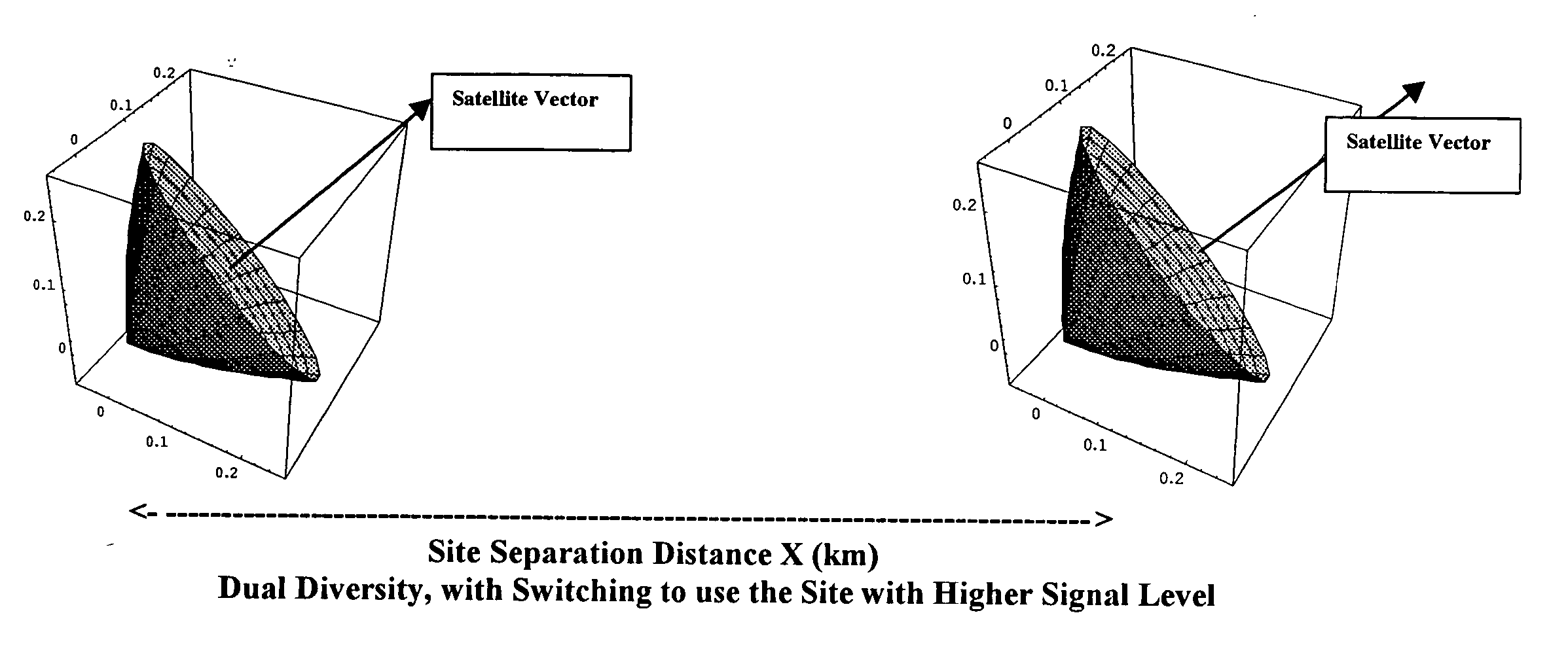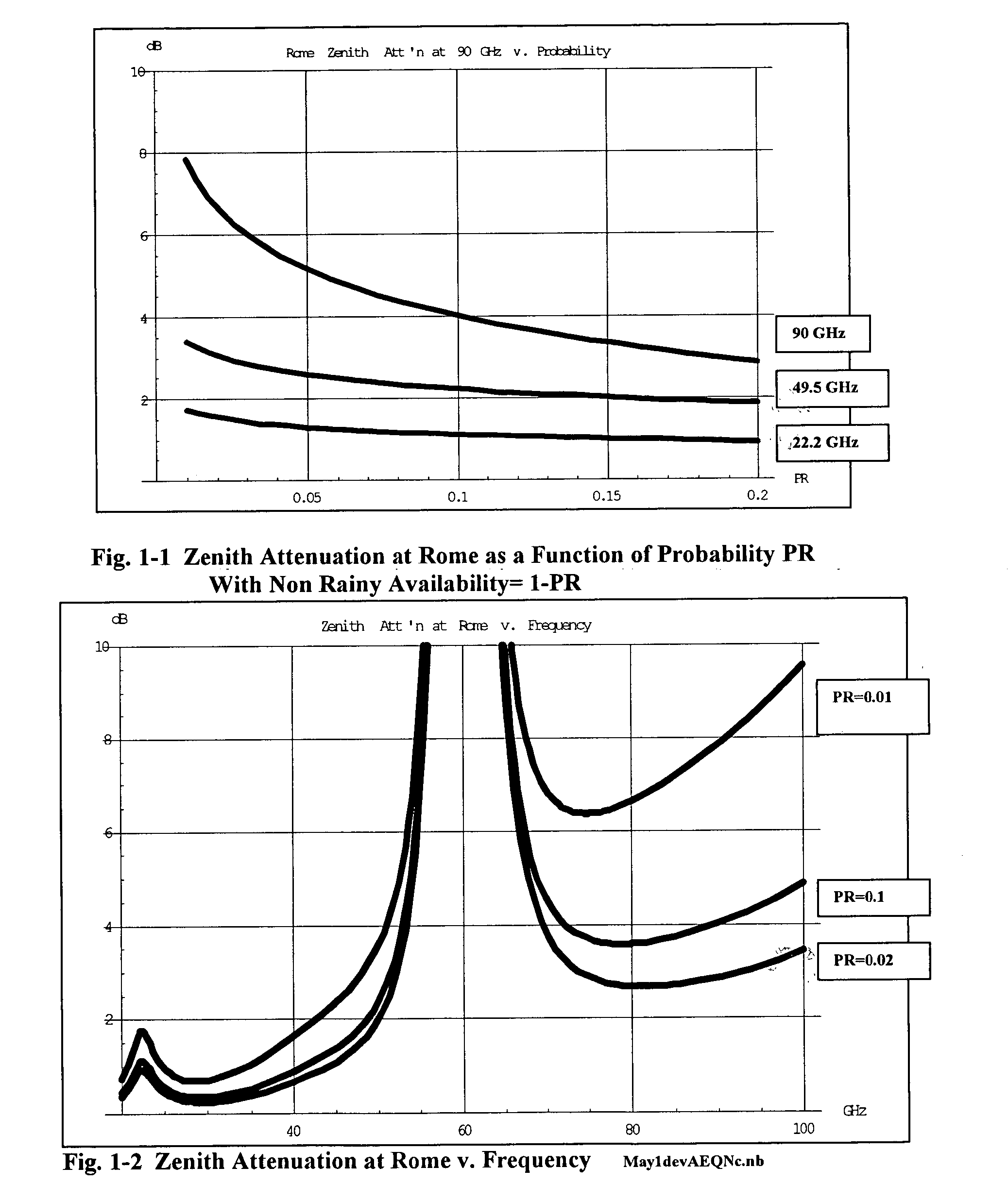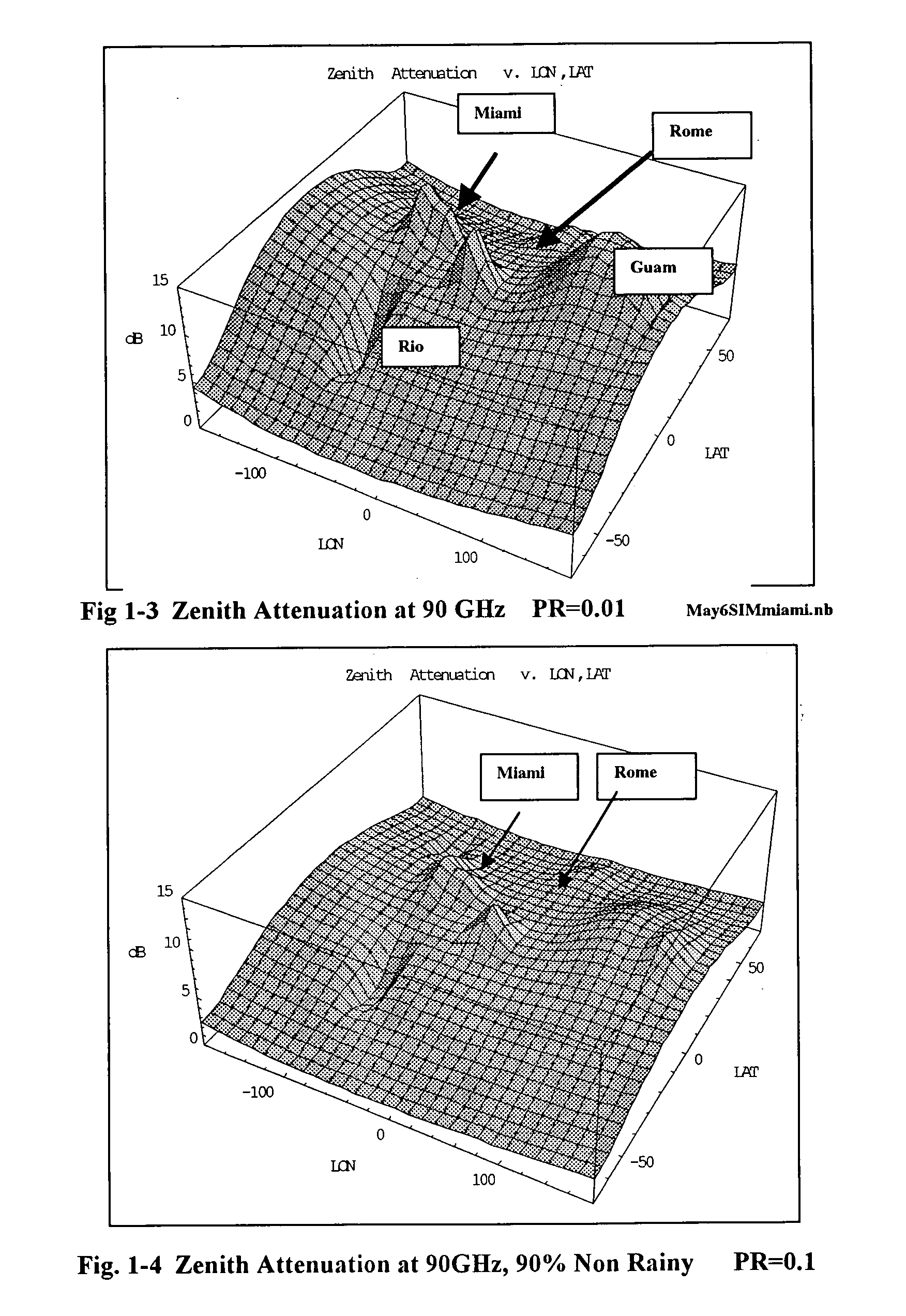Method to extend millimeter wave satellite communication (75-98 GHz) and 3-10 micron laser links to wide areas in the temperate zone
a technology of laser link and millimeter wave, applied in the field of satellite communication system, can solve the problems of de-emphasized or even outright ignored the advantages of higher frequencies, such as the increase of the gain at constant apertur
- Summary
- Abstract
- Description
- Claims
- Application Information
AI Technical Summary
Benefits of technology
Problems solved by technology
Method used
Image
Examples
Embodiment Construction
Method to Extend Millimeter Wave Satellite Communication (75-98 GHz) and 10 Micron Laser Links to Wide Areas in the Temperate Zone
Overview of this Section
[0050] The inventor extends a four dimensional satellite attenuation model to five dimensions, with the aid of an exponential probability variable. Millimeter wave satellite communication in the 75-98 GHz region is indicated to be attractive for most of the Temperate Zone, with a 90% non rainy condition. The second part discusses diversity and advantages for high availability.
1. Background
[0051] Gaseous attenuation for satellite links was derived [4] in the early '80s [Appendix] by integrating terrestrial attenuation equations over the changing pressure as a function of altitude. These new results were conceptual and practical improvements over terrestrial attenuation equations which are often used for satellite communication. The integrated equations were intended to start a global attenuation model, but unknown cloud atten...
PUM
 Login to View More
Login to View More Abstract
Description
Claims
Application Information
 Login to View More
Login to View More - R&D
- Intellectual Property
- Life Sciences
- Materials
- Tech Scout
- Unparalleled Data Quality
- Higher Quality Content
- 60% Fewer Hallucinations
Browse by: Latest US Patents, China's latest patents, Technical Efficacy Thesaurus, Application Domain, Technology Topic, Popular Technical Reports.
© 2025 PatSnap. All rights reserved.Legal|Privacy policy|Modern Slavery Act Transparency Statement|Sitemap|About US| Contact US: help@patsnap.com



